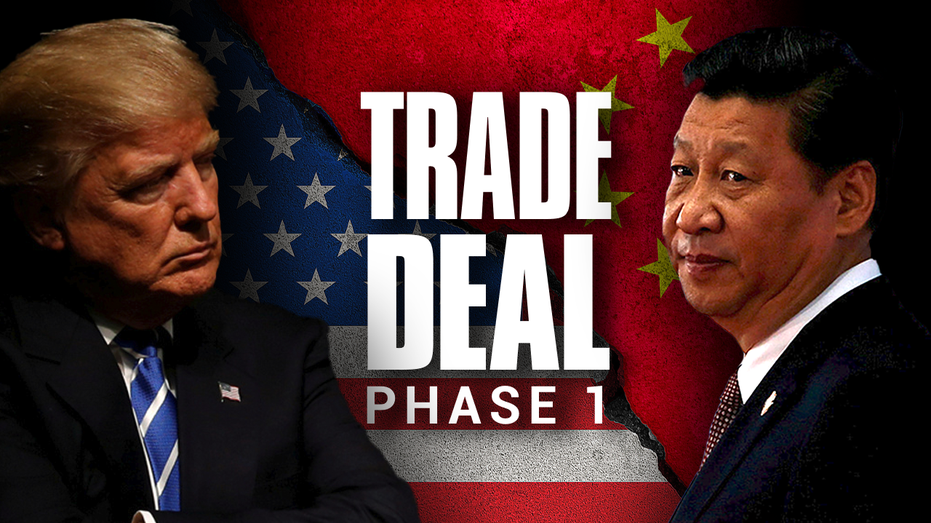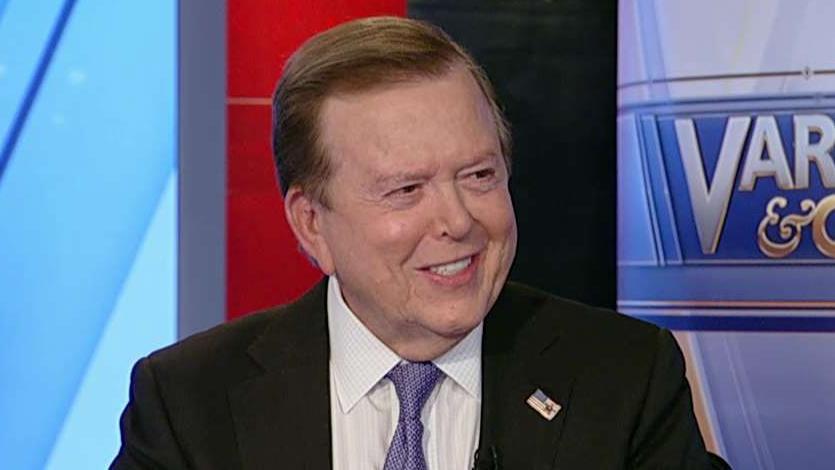'Skinny' trade deal leaves U.S., China starving for Phase 2
'Our eyes are on the prize'
The U.S. and China have yet to sign their phase one trade deal, but the two economic superpowers have already begun setting their sights on phase two.
“It's important we remember that our eyes are on the prize, and the prize really consists of a number of key issues that would be part of a phase-two deal,” Jeremie Waterman, president of the China Center and vice president for Greater China at the U.S. Chamber of Commerce, told FOX Business.
“In particular, I'm referring to China's subsidies, digital and data discrimination and the rest, perhaps a larger set of policies and practices that tie into forced technology transfer."
US, CHINA TRADE DEAL IS A 'REAL BREAKTHROUGH'
As part of its Made in China 2025 plan, Beijing aims to use government subsidies to help Chinese companies buy intellectual property that will give them an edge against Western competitors, particularly in fields such as 5G, or fifth-generation wireless technology that provides wifi-like speeds on cell signals.

Companies have also complained that China uses its control over data and Internet platforms to favor the country's own companies, many state-owned, at their expense.
The U.S. further aims to stop the forced transfer of technology, in which Beijing requires American companies to partner with Chinese firms and share trade secrets as a condition of doing business in the country.
Waterman called it “encouraging” that the U.S. and Beijing have already spent a lot of time discussing those concerns.
The phase one deal is “another significant step forward in advancing President Trump’s economic agenda,” Treasury Secretary Steven Mnuchin said in a statement. The agreement “marks critical progress toward a more balanced trade relationship and a more level playing field for American workers and companies."
Reducing a trade imbalance of more than $300 billion between the U.S. and China was one of the cornerstones of Trump’s first campaign, and Michael Pillsbury, director of the Center for Chinese Strategy at the Hudson Insitute, told FOX Business’ Lou Dobbs that the partial deal is “going to improve” the situation.
As part of the initial agreement, China committed to purchasing $50 billion of U.S. crops, increasing intellectual-property protections and ending the manipulation of its currency, the yuan.
In return, the U.S. will halve the 15 percent tariffs on $120 billion of Chinese goods and will not put in place the 15 percent tariffs that were set to hit $160 billion of Chinese goods on Sunday. Duties of 25 percent on $250 billion of Chinese imports will remain.
The skinny deal further deescalates a 21-month-long trade war that has weighed on the world’s two largest economies. China’s grew at a 6 percent clip in the third quarter, its weakest since recordkeeping began in 1993. Economic expansion in the U.S. slowed to 2.1 percent in the July-to-September period, down from 3.1 percent at the beginning of the year.
“Any reduction of tariffs on both sides, but on the U.S. side in particular, is something that we very much welcome and we'd like to see more of going forward,” Waterman said. Tariffs are paid by U.S. importers when their orders from China arrive in port, and many pass the extra cost on to customers.
Waterman was on the same page with Trump when he said phase two negotiations will begin “immediately.”
CLICK HERE TO READ MORE ON FOX BUSINESS
“We couldn't agree more with that sentiment,” Waterman said.




















